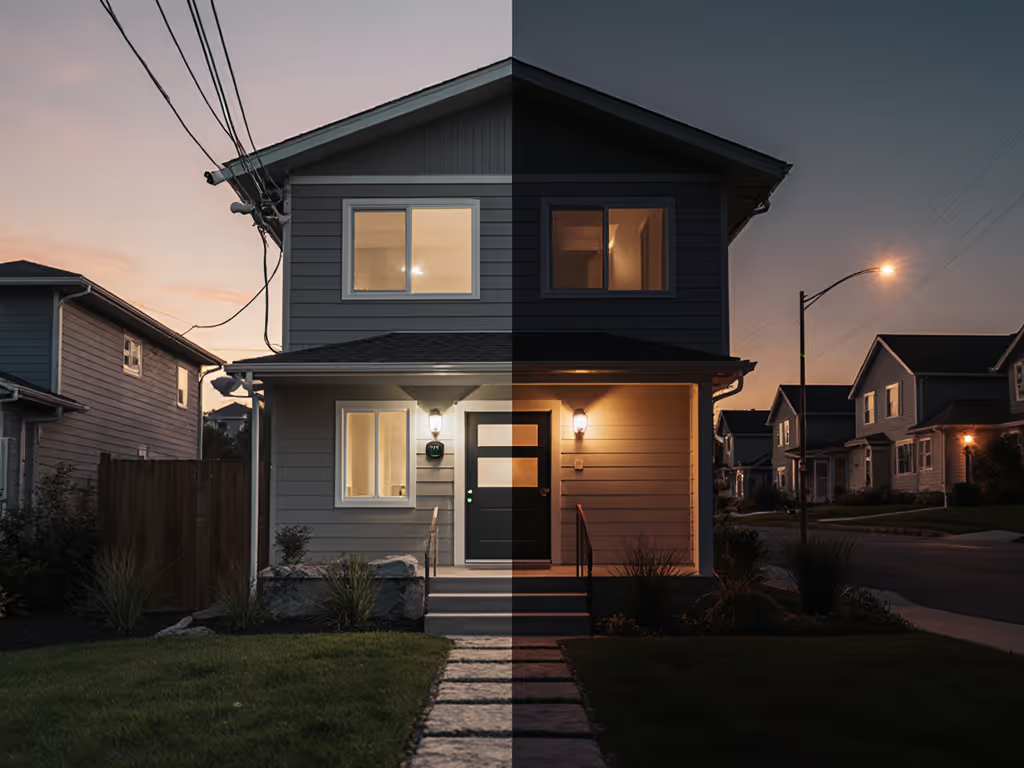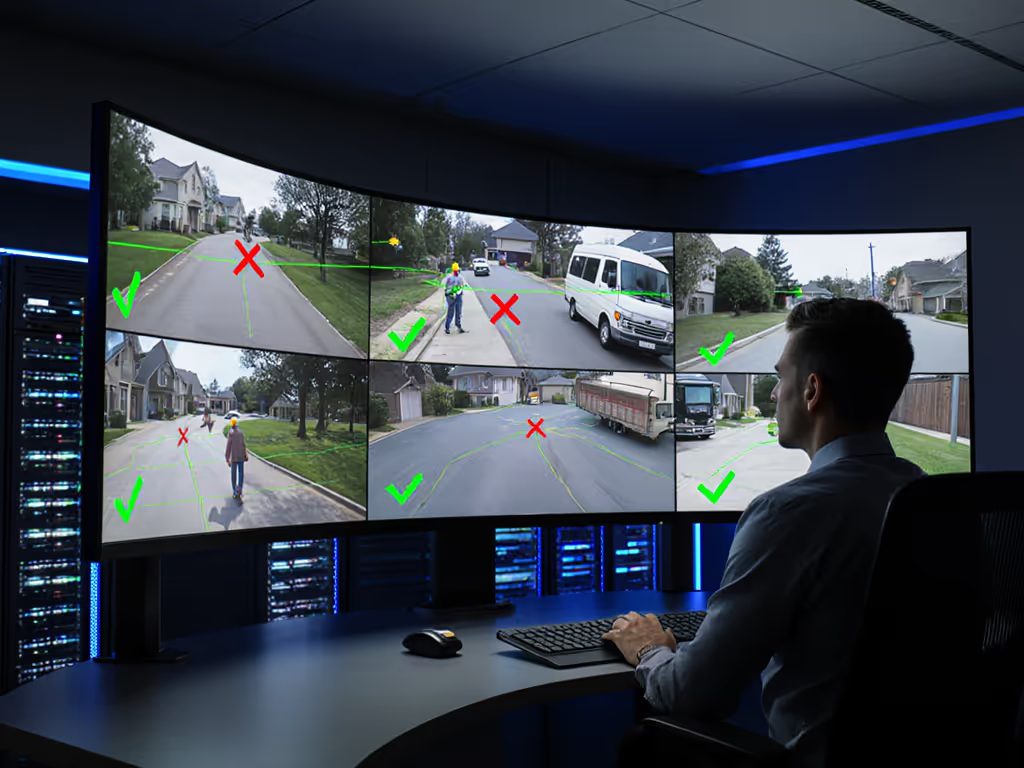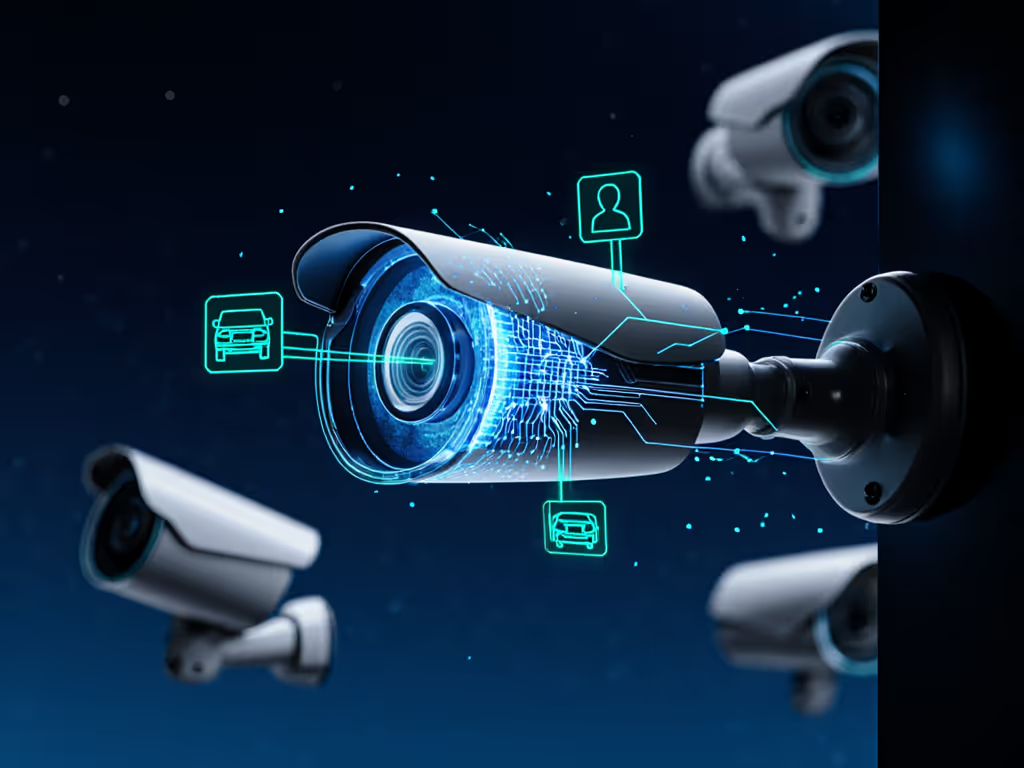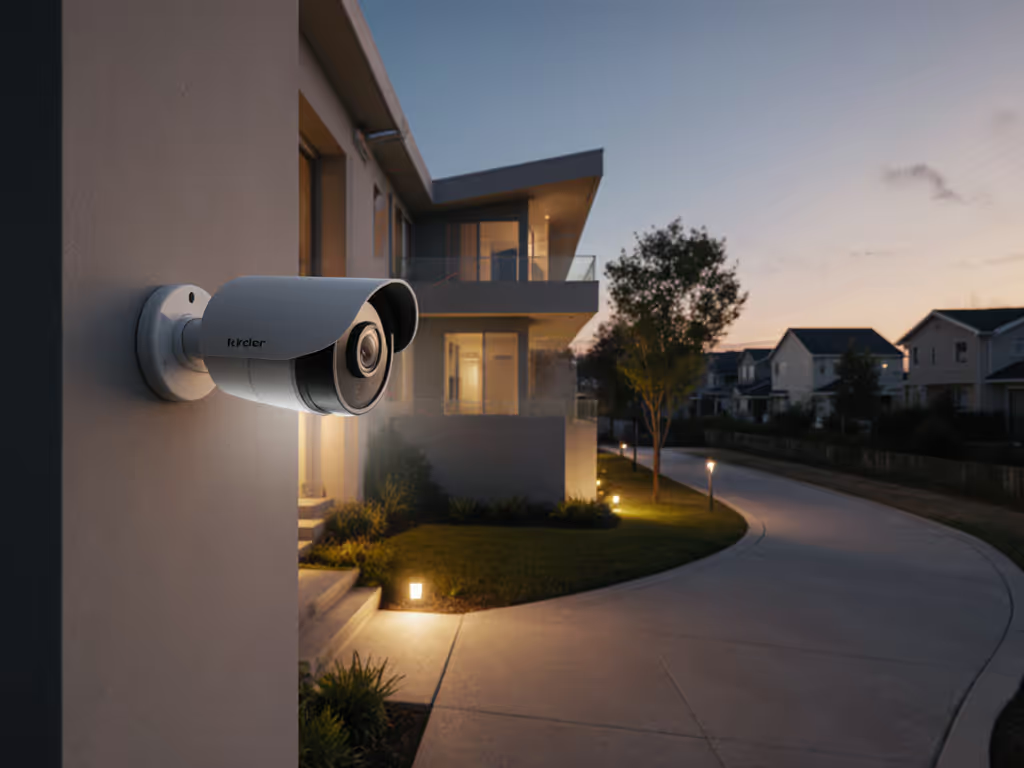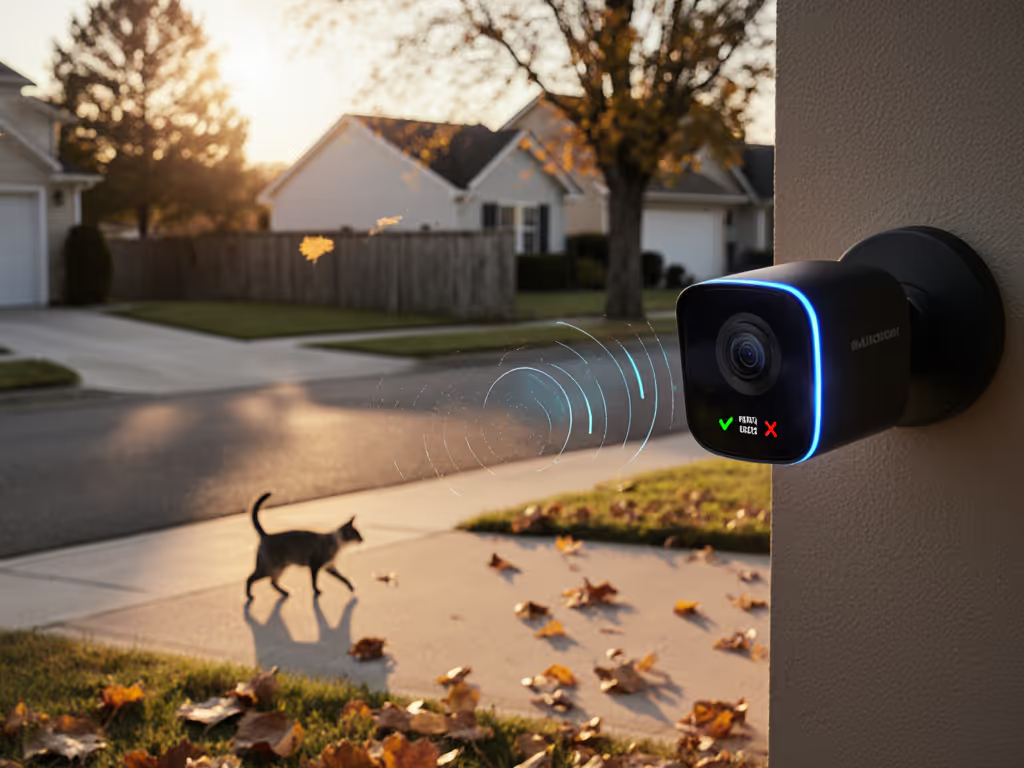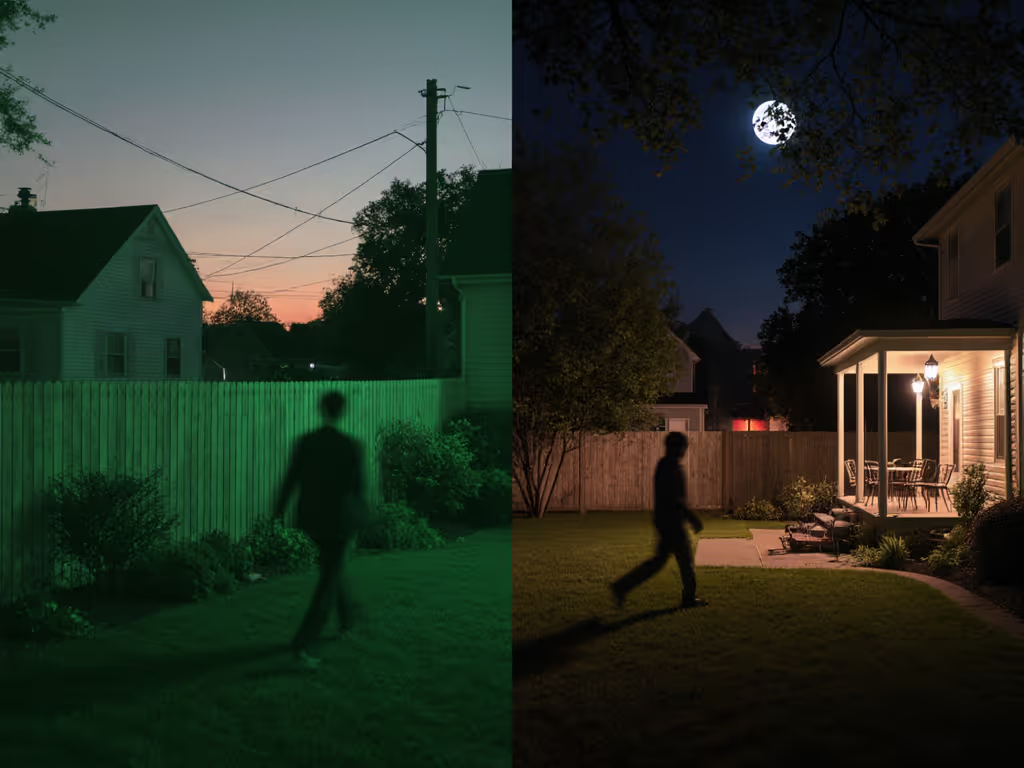For homeowners and small business owners drowning in false alerts, video content analysis transforms your home security camera from a notification nightmare into a reliable guardian. Unlike basic motion sensors that scream at falling leaves, VCA intelligently distinguishes between a stray cat and a porch pirate, slashing false alarms by up to 90% while catching real threats. After my neighbor's doorbell footage accidentally exposed our street in a viral group (a sobering lesson in frictionless sharing), I rebuilt my system around this principle: Collect less, control more; privacy is resilience when things go wrong.
Why Your Current Motion Detection Fails You
Most consumer cameras rely on rudimentary motion detection, triggering alerts for any pixel change, a flaw exposing you to chronic notification fatigue. Trees swaying, headlights sweeping, or even raindrops hitting the lens flood your phone with 200+ daily alerts. This isn't just annoying; it erodes trust. When the 201st alert pings at 3 a.m., you'll ignore it, including the one showing an actual intruder.
Motion Detection vs VCA: The Critical Divide
| Feature | Basic Motion Detection | Video Content Analysis (VCA) |
|---|
| Trigger Source | Pixel movement only | Object classification (people, vehicles, packages) |
| False Alarm Rate | 70-90% (pets, weather, foliage) | 5-15% (context-aware filtering) |
| Night Reliability | High false positives (IR glare, insects) | Low false positives (shape/size analysis) |
| Privacy Exposure | Raw clips uploaded to cloud | On-device processing; optional redaction |
| Response Time | 15-60 seconds (cloud-dependent) | Sub-5 seconds (local processing) |
VCA's magic lies in real-time threat detection through layered analysis: first identifying objects (via YOLO neural networks), then tracking movement patterns, and finally applying behavioral rules, like "person approaching door after dark" instead of "any motion." This isn't futuristic tech; it's accessible today through open standards like ONVIF that avoid proprietary lock-in.
Beyond Accuracy: Privacy as Your Reliability Anchor
Here's where most reviews miss the point: privacy and reliability reinforce each other. When your VCA processes locally, filtering out irrelevant motion before data ever leaves the camera, you eliminate two critical weak points:
- Cloud dependency risks: Outages, throttled bandwidth, or subscription lapses won't blind your system.
- Data exhaust: Fewer clips mean less storage corruption, no third-party leaks, and admissible evidence (police reject redacted cloud footage).
Control is a feature, not a compromise. When I rebuilt my NVR with per-camera encryption and strict retention, false alarms dropped and my footage gained legal credibility. The system's reliability soared precisely because I minimized its attack surface.
This is threat-model framing in action: Map risks (e.g., false dispatch fines from neighbor complaints) to controls (e.g., masking zones for neighboring properties). A camera that ignores irrelevant motion isn't lazy, it's principle-based guidance optimizing for your actual needs.
Actionable Steps to Implement VCA Without the Hype
1. Audit Your Existing Alerts (10 Minutes)
- Do this now: Scroll through last week's alerts. If >80% are false (wind, pets, shadows), demand on-device person/vehicle detection. No "AI pack" subscription should unlock this basic function.
- Pro tip: Set up a test zone facing a tree. If your camera flags movement continuously, its VCA is glorified motion detection.
2. Demand Local Processing (Non-Negotiable)
Cloud-based VCA adds lag and privacy risks. Prioritize cameras supporting:
- On-device classification: NVIDIA Jetson or Google Coral chips enable person/package detection offline.
- Edge storage: MicroSD or NVR recording with pre-roll buffering (catches events before alerts).
- Zero cloud dependency: Verify local-only mode exists (no "forced onboarding" to vendor apps).
3. Configure Smart Rules, Not Just Zones
Basic "activity zones" still trigger for squirrels. Instead, program rules like:
- Alert only if: person + stationary > 30 seconds + facial recognition confidence > 85%
- Ignore: vehicles moving > 15 mph + objects < 2 ft tall (pets)
This risk-to-control mapping ensures alerts match your definition of a threat, no more ignoring sirens due to false positives.
4. Protect Your Night Vision Investments
Poor night footage cripples real-time threat detection. Combat this by:
- Disabling IR glare: Angle cameras away from reflective surfaces (windows, mailboxes).
- Using color night vision: Prioritize cameras with Starlight sensors (e.g., 1/1.8" sensors) over IR-only models.
- Testing at 2 a.m.: Verify license plate readability at 15 ft, critical for evidence.
The Quiet Victory: Less Noise, More Peace of Mind
Implementing VCA shouldn't feel like a tech overhaul. It's about reducing cognitive load, knowing the alert you get matters. When your system stops screaming at shadows but catches a package thief, it earns trust. And when breaches happen (as they will), local storage with encryption ensures your evidence stays usable, not just "secure."
This isn't surveillance creep; it's surgical precision. You're not collecting more data, you're extracting meaning from less. Every pet-ignored alert, every tree-wind false positive erased, tightens the feedback loop between your intention and your system's behavior.
Ready to reclaim your peace of mind? Explore how local-first VCA frameworks align with your privacy threshold, without vendor lock-in or subscription traps. Your next notification should be worth your attention, not a reflex to silence.
